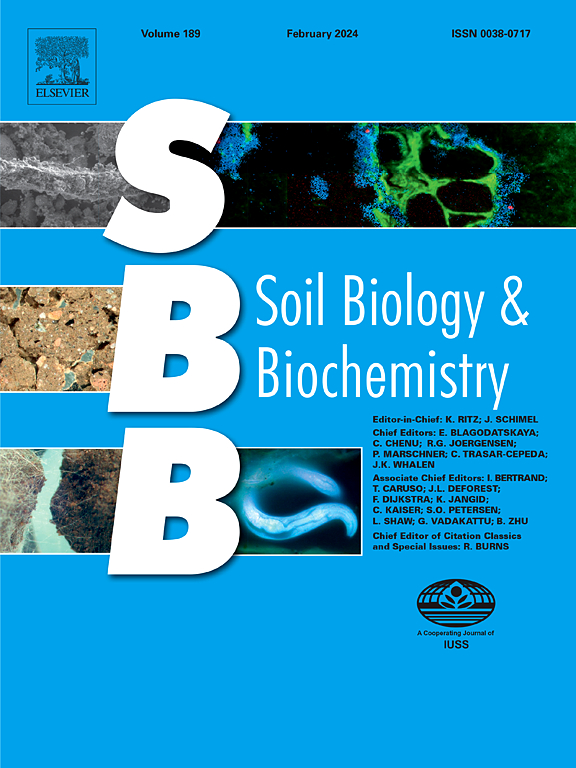Soil health assessment of urban forests in Nanchang, China: Establishing a minimum data set model
IF 10.3
1区 农林科学
Q1 SOIL SCIENCE
引用次数: 0
Abstract
Soil health plays an important role in environmental and ecosystem sustainability. Urban forest soil health has been gradually deteriorating, resulting in several challenges. Here, a soil health index was employed to explore the soil health conditions and spatial differences in urban forests. We assessed soil health in urban forests in Nanchang, China, by establishing a minimum data set model using 20 soil indicators. The results suggested that the minimum data set included soil organic carbon, clay, pH, soil moisture content, nitrate nitrogen, and mean weight diameter, which could be key indicators for assessing soil health conditions. The average of the soil health index-total data set was 0.45 and that of the soil health index-minimum data set was 0.49, both representing grade III moderate health. Soil health index-minimum data set was positively correlated with soil health index-total data set (p < 0.001), with an R2 of 0.77, which suggests that the minimum data set can closely reflect the total data set. In different urban forest types, the average soil health index value represented a grade III moderate health level, among which the soil health index value in landscape forest was remarkably higher (0.51) than that in the other forest types (p < 0.05). With increasing urbanization intensity, the soil health index decreased significantly (p < 0.05), indicating that soil health differed across the components of urban expansion. Our findings, along with further analysis and assessment of urban forest soil health index, can help establish a theoretical basis for soil management in the mid-reaches of the Yangtze River and provide references for managing the adverse effects of urbanization on soil health.
南昌市城市森林土壤健康评价:最小数据集模型的建立
土壤健康对环境和生态系统的可持续性起着重要作用。城市森林土壤健康状况逐渐恶化,带来了诸多挑战。在此,我们采用土壤健康指数(SHI)模型来探索城市森林的土壤健康状况和空间差异。我们利用 20 项土壤理化指标建立了最小数据集(MDS),评估了中国南昌城市森林的土壤健康状况。结果表明,最小数据集包括土壤有机碳、粘土、pH 值、土壤水分含量、硝酸盐氮和平均重量直径,这些指标可以作为评估土壤健康状况的关键指标。土壤健康指数-总数据集(SHI-TDS)的平均值为 0.45,土壤健康指数-最小数据集(SHI-MDS)的平均值为 0.49,均代表三级中度健康。SHI-MDS与SHI-TDS呈正相关(p <0.001),R2为0.77,这表明MDS能密切反映TDS。在不同的城市森林类型中,平均 SHI 值代表了三级中等健康水平,其中景观林的 SHI 值(0.51)明显高于其他森林类型(p < 0.05)。随着城市化强度的增加,SHI 值明显降低(p < 0.05),这表明土壤健康在城市扩张的不同部分存在差异。我们的研究结果以及对城市森林SHI的进一步分析和评估,有助于为长江中游地区的土壤管理建立理论基础,并为管理城市化对土壤健康的不利影响提供参考。
本文章由计算机程序翻译,如有差异,请以英文原文为准。
求助全文
约1分钟内获得全文
求助全文
来源期刊

Soil Biology & Biochemistry
农林科学-土壤科学
CiteScore
16.90
自引率
9.30%
发文量
312
审稿时长
49 days
期刊介绍:
Soil Biology & Biochemistry publishes original research articles of international significance focusing on biological processes in soil and their applications to soil and environmental quality. Major topics include the ecology and biochemical processes of soil organisms, their effects on the environment, and interactions with plants. The journal also welcomes state-of-the-art reviews and discussions on contemporary research in soil biology and biochemistry.
 求助内容:
求助内容: 应助结果提醒方式:
应助结果提醒方式:


